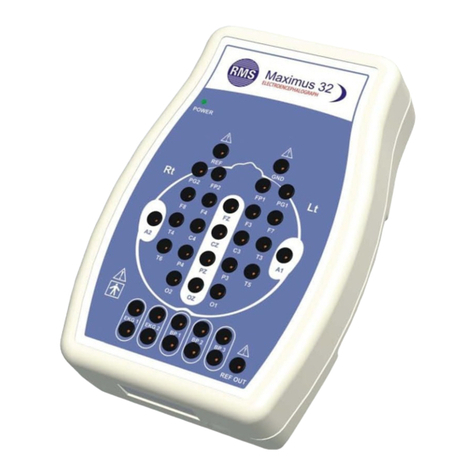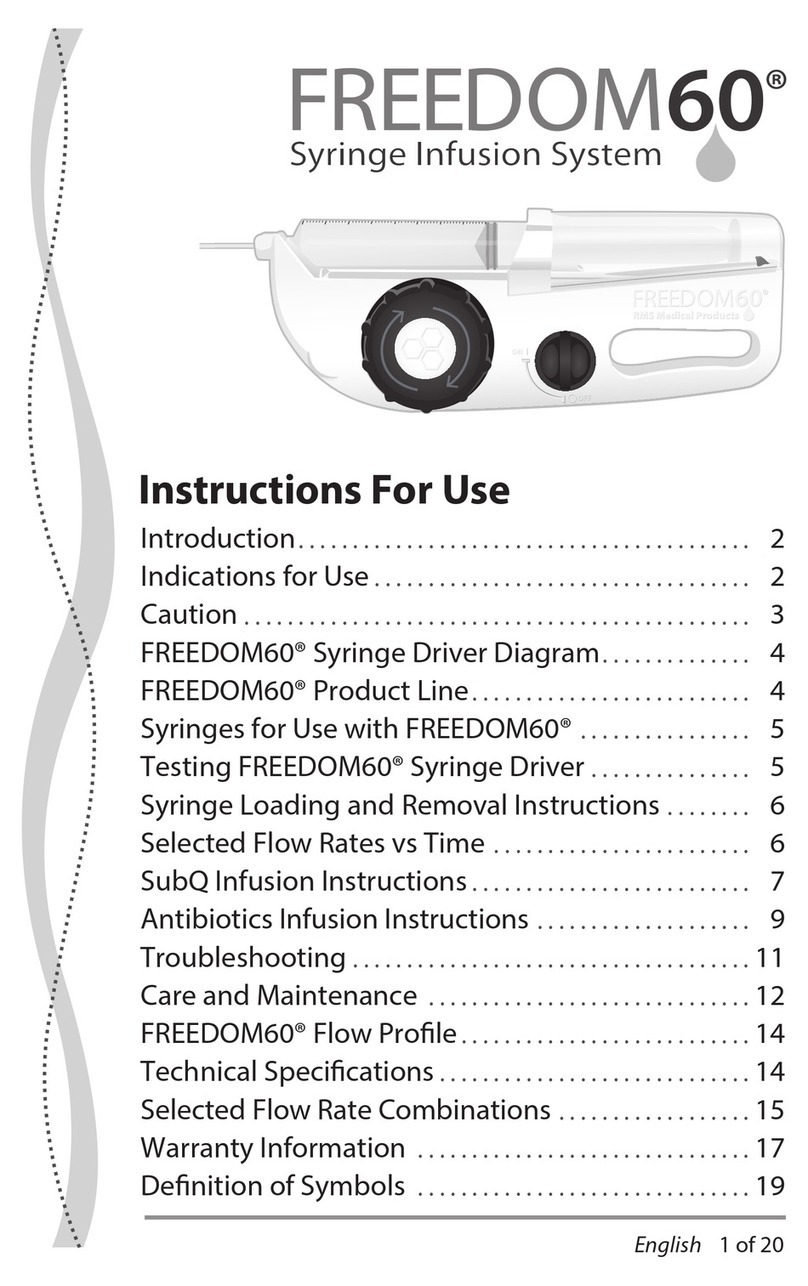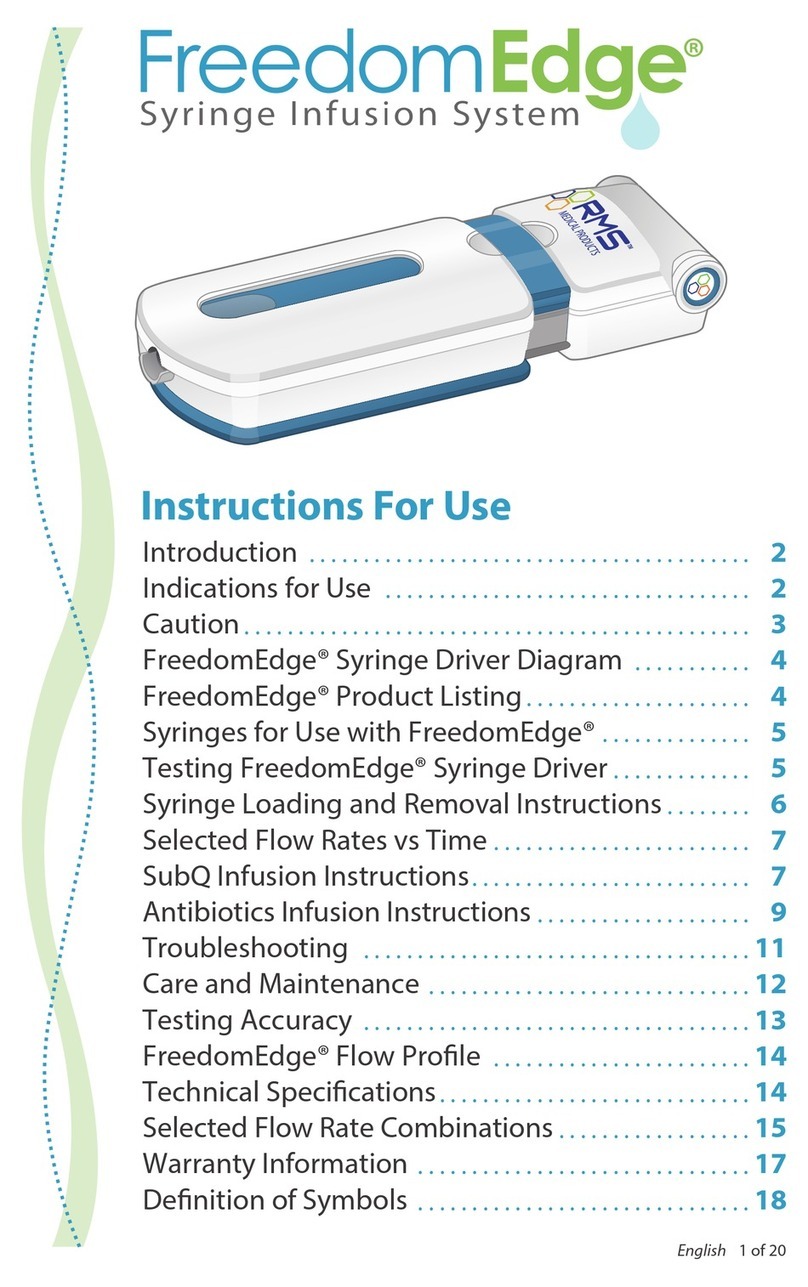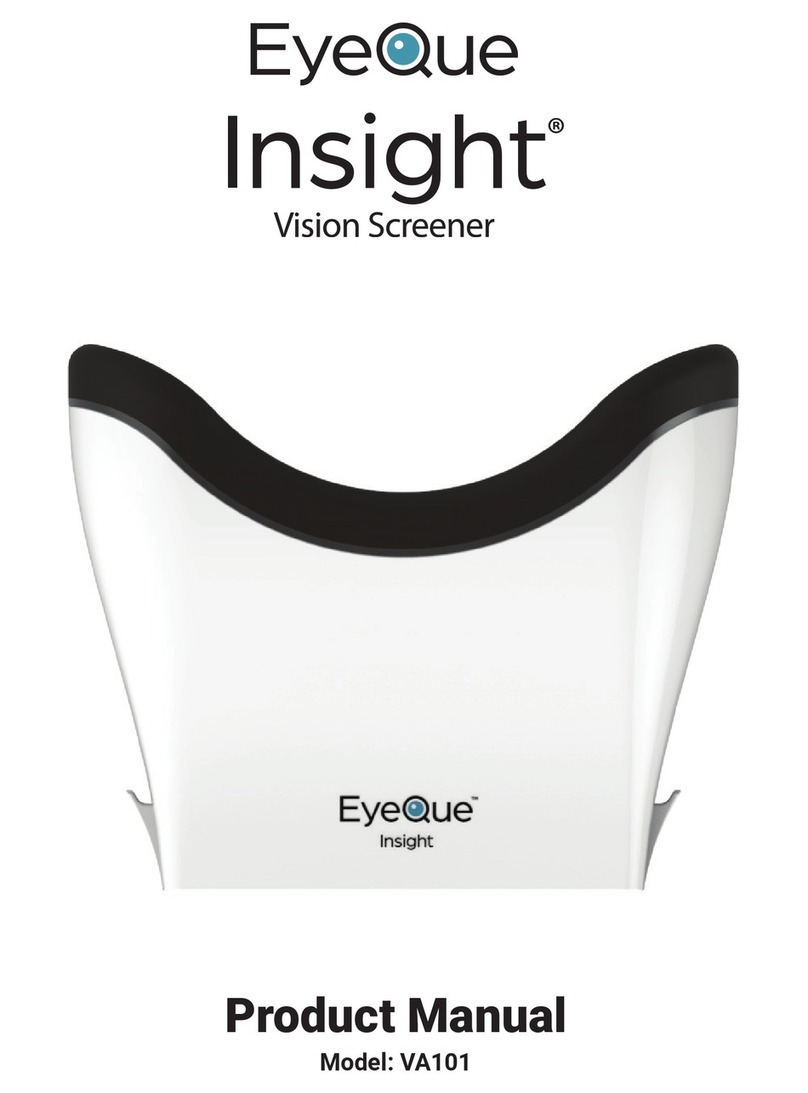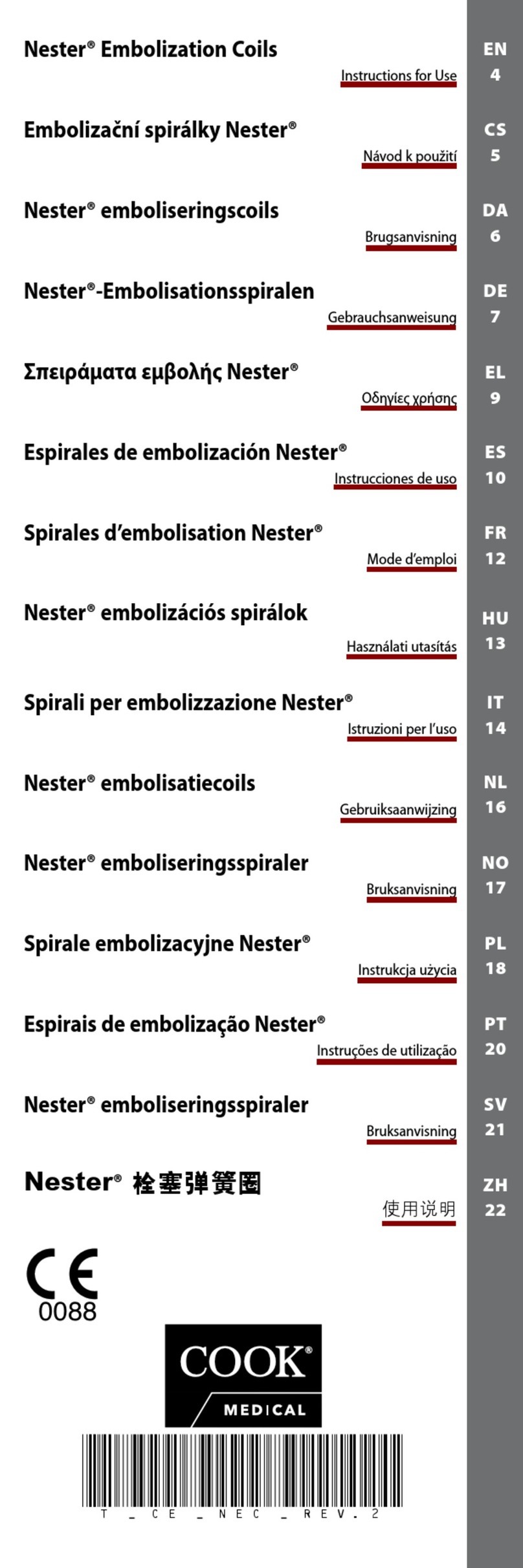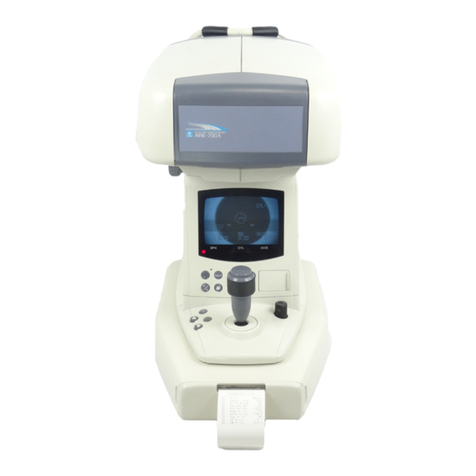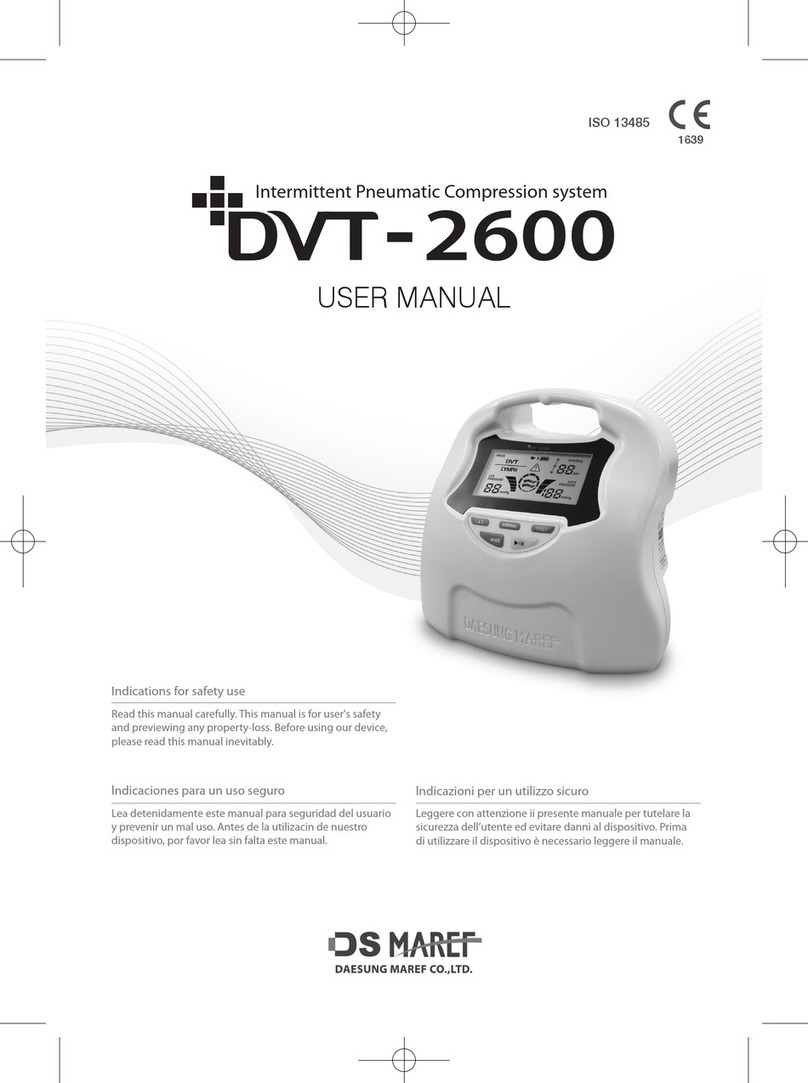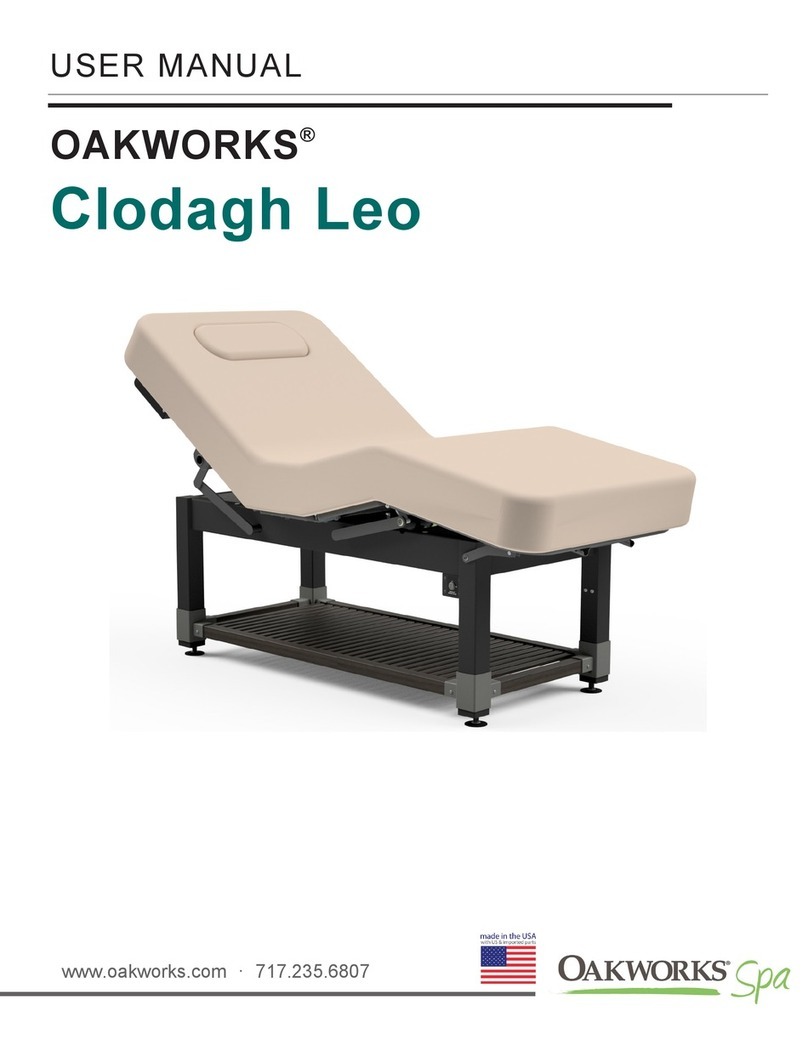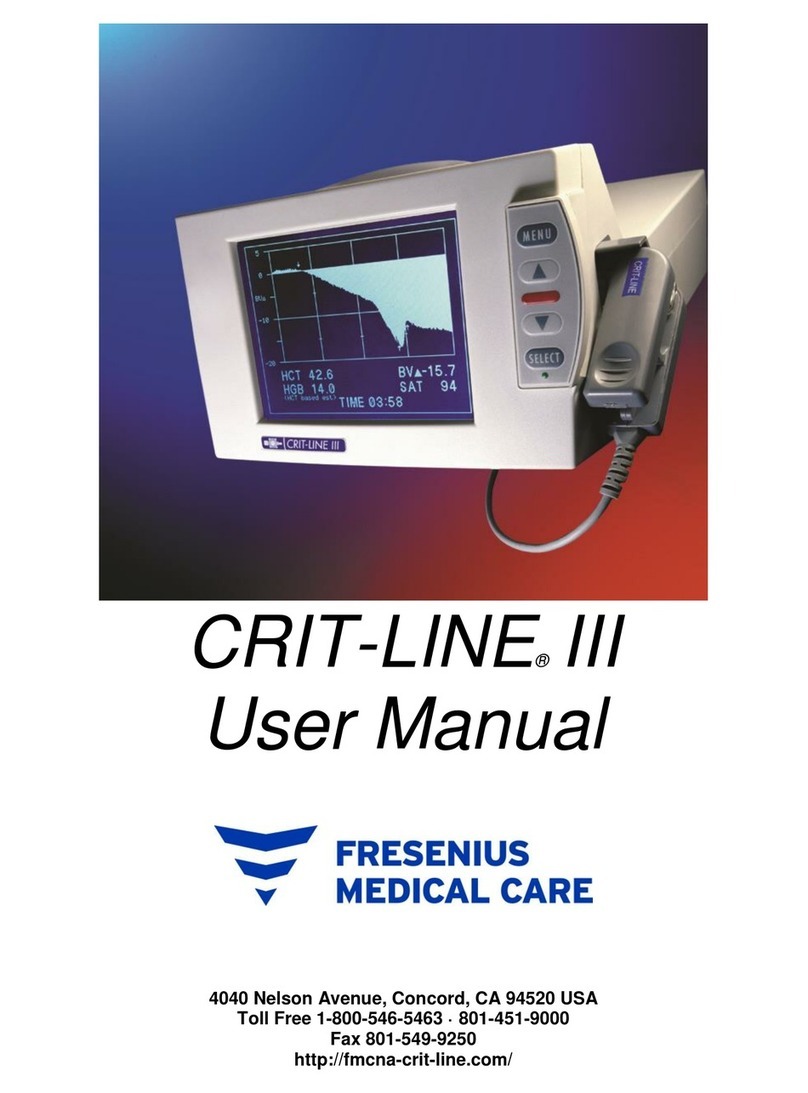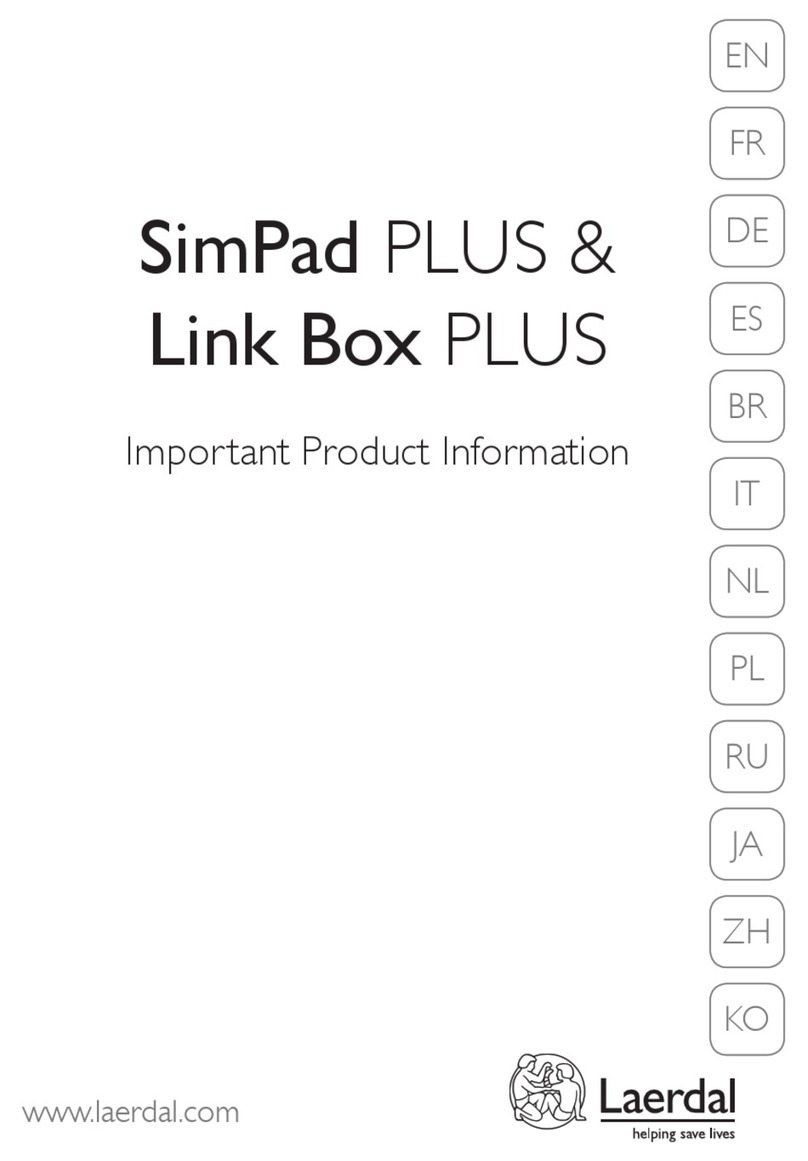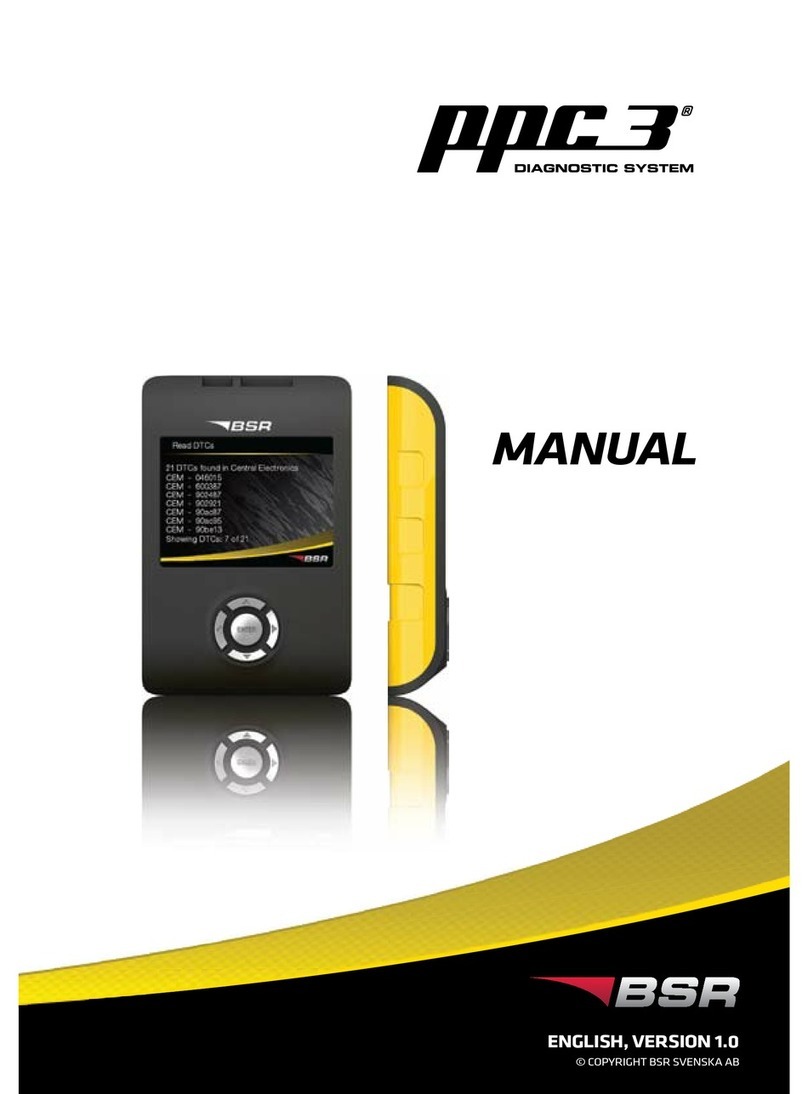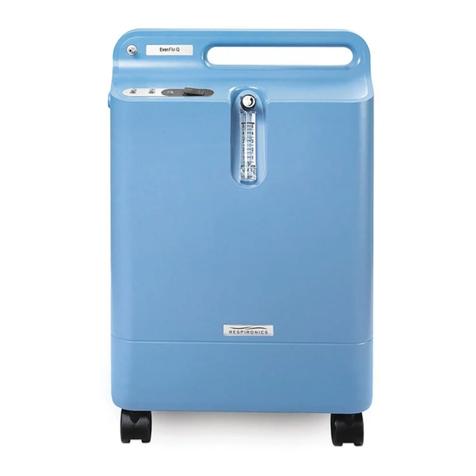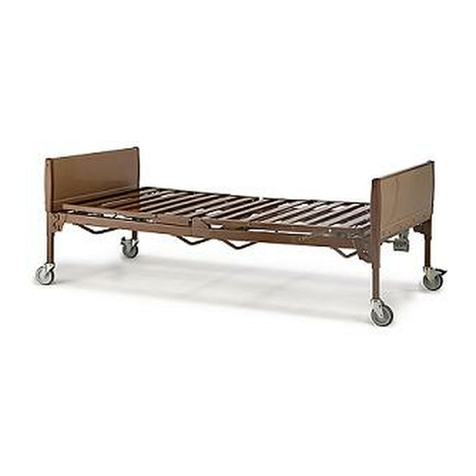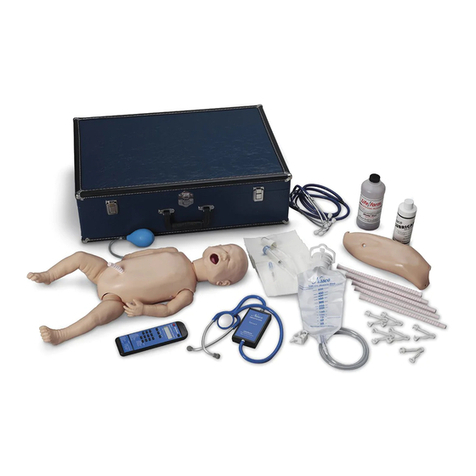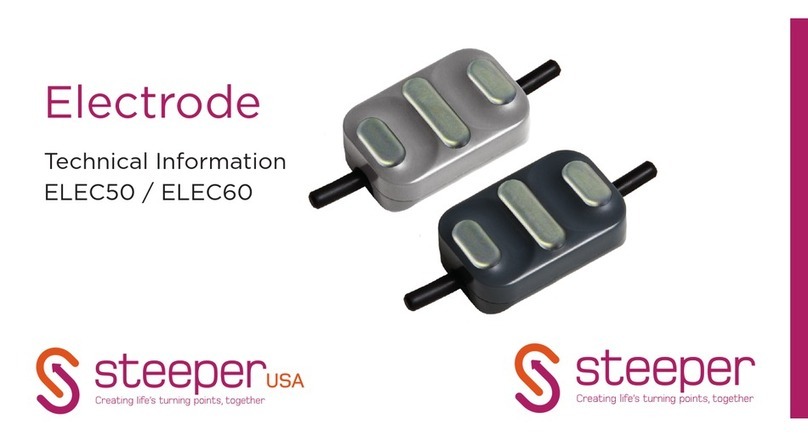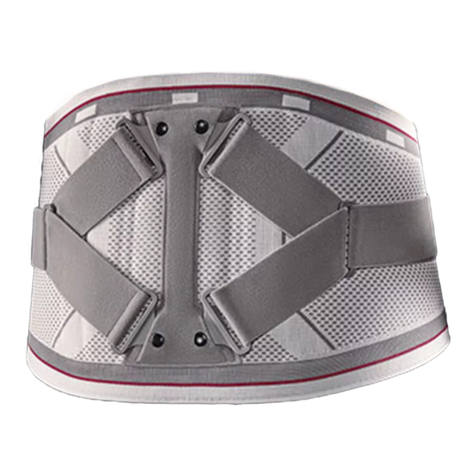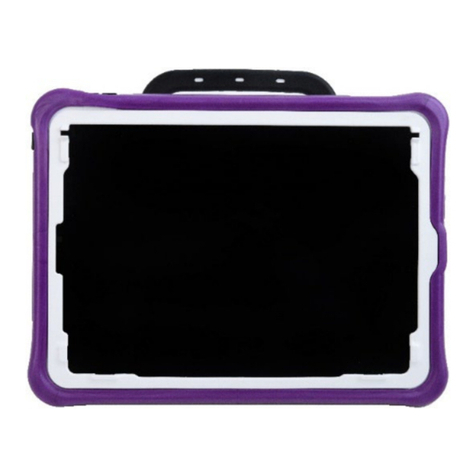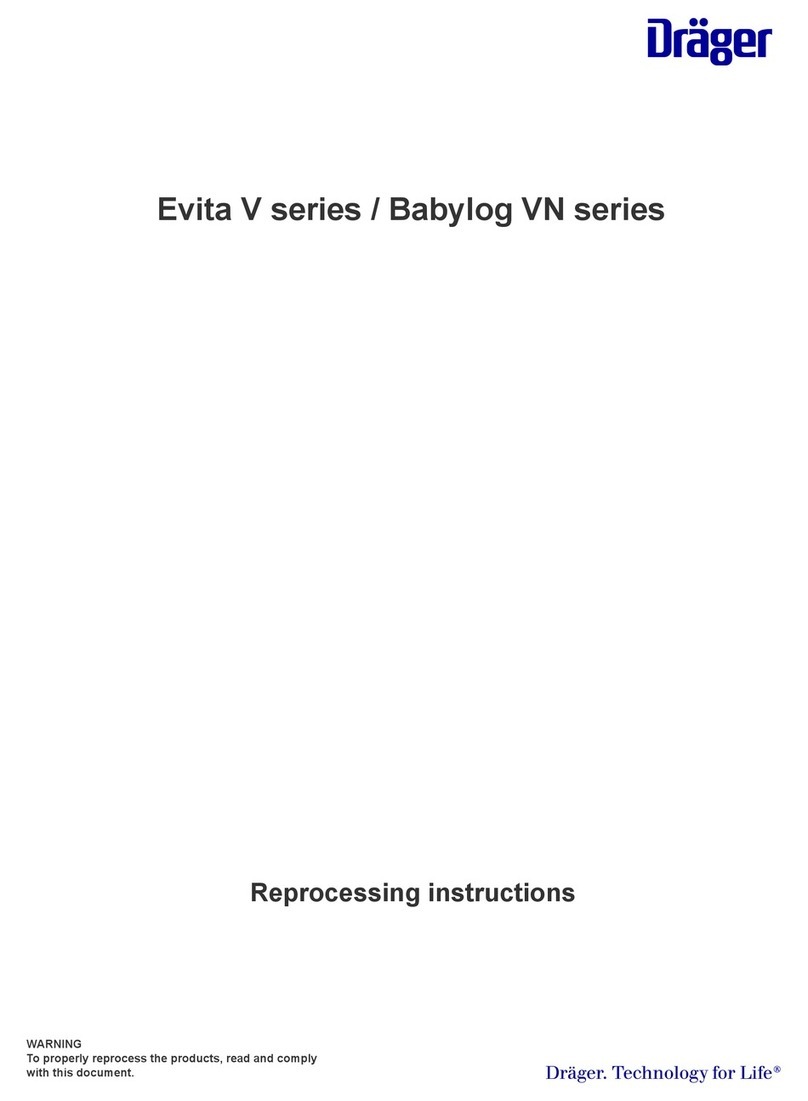RMS FREEDOM60 User manual

Introduction:
The FREEDOM60® Syringe Infusion System is portable and easy to use
requiring no batteries or electric. There are only two operating knobs and special precision tubing sets are used to control the
ow rate.
The FREEDOM60® operates at a constant safe pressure of 13.5psi
(93079.125 Pa)
.
The constant pressure developed in the
FREEDOM60® automatically decreases the ow rate if there is an increase in resistance during the delivery. The system will nd
equilibrium between the increasing resistance and ow rate. It provides constant ow which tends to inhibit clots, and holds full
pressure after an infusion is complete to prevent blood or drug backow. The FREEDOM60® also eliminates concerns of a bolus,
overow, overdose or runaway infusion.
For SCIg, the advantage of dynamic equilibrium is the system’s ability to decrease the ow for any pressure increases caused by tissue
saturation, or improper needle placement (e.g., over a muscle, in scar tissue, needle not deep enough, needles too close together).
Indications for Use:
The FREEDOM60® Syringe Infusion System is indicated for intravenous, intra-arterial, enteral, subcutaneous and epidural infusion of
medications or uids requiring continuous delivery at controlled infusion rates. The FREEDOM60® is also intended to provide
continuous infusion of a local anesthetic directly into the intraoperative site for postoperative pain management.
Contraindications:
The FREEDOM60® is not intended for the delivery of blood, critical* or life-sustaining medications, or for the infusion of insulin.
* Critical may be dened as medication requiring greater accuracy of delivery, such as CNS opiate depressants. In the UK, and certain other
countries, these may be limited by local regulations. CONSULT LOCAL REGULATORY AUTHORITIES.
English (EN) 1 of 8
• Use the FREEDOM60® Syringe Infusion System only for the patient for whom the device is prescribed and only for its intended use.
• Use only RMS Precision Flow Rate Tubing Sets™ manufactured by RMS Medical Products. Use of any other tubing set
may cause the syringe to eject from the pump and eventually cause internal damage to the pump. Use of any other tubing set
may also cause over delivery of uids or medication to the patient.
• Use only recommended 60ml syringes with the FREEDOM60®. Do not use Terumo® syringes.
• Do not use syringes smaller than 60ml. The use of a smaller syringe may cause high pressures unsafe for the patient.
• Before use, carefully inspect the tubing set package. Do not use the tubing set if the package is opened or damaged.
• Do not re-sterilize tubing sets.
• Over use of the slide clamp or storing tubing sets where the slide clamp has been engaged for long periods of time* may
damage the tubing and aect the infusion rate.
• The black tab that pushes on the syringe plunger operates under high force. Do not place ngers on the black tab or inside the
syringe shield at any time. Do not attempt to interfere with the movement of the black tab at any time.
• Carefully inspect the FREEDOM60® Syringe Infusion Pump before use. Verify its condition and test. If repeated testing indicates
the pump is not operating properly or at the appropriate rate of ow, immediately discontinue use.
• Do not attempt to open the pump housing or remove the syringe shield. Do not operate if the syringe shield has been removed.
• Do not attempt to remove the syringe or disconnect the tubing set without rst turning the pump OFF and fully winding the
large knob clockwise until the black tab has reached the end of its track.
• The FREEDOM60® Syringe Infusion System does not have an alarm, therefore no alarm will sound if an interruption to ow occurs.
There is no display of infusion status. The pump is not suitable for use with medication where delay or under-infusion could result
in serious injury.
• Discontinue use of a pump that has been damaged, exposed to severe impact, or which has failed to test properly.
• Discontinue use of a pump that has been submerged in uid. If any uid is allowed to enter the pump, it should be replaced
immediately.
• Do not autoclave the FREEDOM60®. It will melt the ABS plastic and damage the pump.
• In the USA, federal law restricts this device to sale by or on order of a physician.
• Priming and shipping of tubing sets, packaged at temperatures below freezing, is not recommended. This may damage
the tubing.
Caution:
* For example, generally greater than about 2 hours.

END OF TRACK
(TRACK END)
LARGE KNOB
(WIND UP KNOB)
SYRINGE
PLUNGER
PUMP NOSE
LUER DISC END OF
FLOW RATE TUBING
MALE END OF
FLOW RATE TUBING
SYRINGE SHIELD
BLACK TAB
ON/OFF SWITCH
SLIDE CLAMP
Patent No. 398,053
English (EN) 2 of 8
FREEDOM60® Pump Diagram:
FREEDOM60® Product Line:
Each FREEDOM60® Syringe Infusion System includes a travel pouch and user manual.
Product
Part #
FREEDOM60® Syringe Infusion Pump
F10050
Replacement Travel Pouch - black
F10090
Syringes for use with the FREEDOM60®:
• Becton Dickinson & Co. BD® Luer-Lok® 60ml (US Reference #309653; EU Reference #300865)
• Sherwood Medical Monoject® 60ml (Reference #8881-560125)
Sterile water for injection (SWFI) direct ow rates.
Adjusted for antibiotic use, for actual ow rates see examples on page 6.
SWFI ow rates will be reduced from stated values. Typically used for viscous drugs.
Zebra Print Travel Pouch - pattern F10080
RMS Precision Flow Rate Tubing™(case of 50)
Part #Flow RatePart # Flow Rate
F60
F120
F180
F275
F420
F500
F600
F900
F1200
F2400
60ml/hr
120ml/hr
180ml/hr
275ml/hr
420ml/hr
500ml/hr
600ml/hr
900ml/hr
1200ml/hr
2400ml/hr
F0.5
F1
F2
F3
F3.8
F5
F8
F10
F15
F30
F45
0.5ml/hr
1ml/hr
2ml/hr
3ml/hr
3.8ml/hr
5ml/hr
8ml/hr
10ml/hr
15ml/hr
30ml/hr
45ml/hr

Testing the FREEDOM60® Syringe Infusion Pump:
1. Examine the inside of the syringe shield and ensure it is free of debris or contamination.
2. Make sure that the pump’s on/o switch is in the OFF position and that the black tab within the syringe shield is
at the end of its track. If the black tab is not at the end of its track, fully wind the large knob clockwise.
3. Turn the pump ON (–) and watch that the tab moves smoothly the full length of its track; listen for the
following sounds:
• a‘click’ as the pump is turned ON (–)
• a‘whirring’sound as the black tab moves forward
• a‘click’ as the tab reaches the end of its travel
4. Test to make sure the syringe tension-tab (the one-inch long tab located at the entry of the syringe shield) operates
freely by adjusting it up and down with your nger.
English (EN) 3 of 8
Syringe Loading and Removal Instructions:
To load a syringe: To remove a syringe:
Make sure that the pump’s
on/o switch is in the OFF
position and that the black tab
within the syringe shield is at
the end of its track. If the black
tab is not at the end of its track,
wind the large knob clockwise.
With the tubing attached and
gradations facing up, load the
pre-lled syringe, plunger rst,
into the syringe shield. Make
sure the tubing luer disc is fully
seated in the pump’s nose.
After the infusion is complete, turn
the pump OFF and wind the large
knob clockwise until the black tab is
at the end of its track. Remove the
empty syringe by gently pushing
it back to disengage the nose,
then lifting it up out of the pump.
Note: You will never need to use force to load or remove a syringe. If you’re having trouble loading or removing, stop and make sure the
black tab is at the end of its track.
Note: Drug viscosity will greatly aect delivery times. For assistance in determining which ow rate tubing set to use, please
contact your local representative, or RMS Medical Products at +1 845-469-2042 or via email at [email protected].
Selected Flow Rates vs Time:
Flow Rate vs Time Chart
1ml/hr
2ml/hr
30ml/hr
45ml/hr
60ml/hr
120ml/hr
5
5 hrs.
2 hrs. 30 min.
10 min.
6 min. 42 sec.
5 min.
2 min. 30 sec.
10
10 hrs.
5 hrs.
20 min.
13 min. 18 sec.
10 min.
5 min.
15
15 hrs.
7 hrs. 30 min.
30 min.
20 min.
15 min.
7 min. 30 sec.
20
20 hrs.
10 hrs.
40 min.
26 min. 42 sec.
20 min.
10 min.
25
25 hrs.
12 hrs. 30 min.
50 min.
33 min. 18 sec.
25 min.
12 min. 30 sec.
30
30 hrs.
15 hrs.
60 min.
40 min.
30 min.
15 min.
35
35 hrs.
17 hrs. 30 min.
70 min.
46 min. 42 sec.
35 min.
17 min. 30 sec.
40
40 hrs.
20 hrs.
80 min.
53 min. 18 sec.
40 min.
20 min.
45
45 hrs.
22 hrs. 30 min.
90 min.
60 min.
45 min.
22 min. 30 sec.
50
50 hrs.
25 hrs.
100 min.
66 min. 42 sec.
50 min.
25 min.
55
55 hrs.
27 hrs. 30 min.
110 min.
73 min. 18 sec.
55 min.
27 min. 30 sec.
60
60 hrs.
30 hrs.
120 min.
80 min.
60 min.
30 min.
Syringe
Volume

Starting the Infusion
Before loading the syringe verify the following:
• Make sure that the pump’s on/o switch is in the OFF position.
• Make sure that the black tab inside the syringe shield is at the end of its track. If the black tab is not at the end of its track,
wind the large knob clockwise.
• Verify that you have the correct rate controlled tubing set.
1. Using sterile technique, remove the sterile cap from the luer disc end of the rate controlled tubing set and connect the
tubing to the pre-lled syringe.
2. With syringe gradations facing up, insert the syringe, plunger rst into the syringe shield. Make sure the luer disc is fully
seated in the pump’s nose.
English (EN) 4 of 8
3. Using sterile technique, prime the tubing with the pump by loosening the cap on the male end and turning the pump
ON (–). You will immediately hear a“whirring”sound as the black tab searches for the syringe plunger. When the tab
nds the plunger it will“click” indicating that that the tab is now applying pressure onto the plunger. Medication is
now being pumped through the tubing set. When all air and air bubbles are gone and medication starts to drip,
tighten the cap.
NOTE: Tubing that is pre-primed for antibiotic use and shipped at temperatures below freezing could be damaged.
4. Remove the cap from the male end of the tubing and connect the tubing to the patient’s indwelling needle or catheter.
5. Turn the pump on to begin the infusion.
Note: You will never need to use force to load or remove a syringe. If you are having trouble loading/removing, make sure the pump is in the
OFF position and that the black tab is at the end of its track. If the black tab is not at the end of its track, fully wind the large knob clockwise.
Note: Once the black tab nds the syringe plunger and the‘click’ sound is heard, the pump will be silent for the entire infusion.
Checking Infusion Progress
Periodically check infusion progress by taking note of the time the infusion started and checking movement of the syringe
plunger. The approximate rate for antibiotics or other non-viscous solutions can be found on the waterproof label attached to the
tubing. (i.e. F60 will ow at 60ml/hr, F30 will ow at 30ml/hr, etc.)
End of Infusion
1. Confirm that the syringe is empty.
2. Turn the pump OFF and wind the large knob clockwise until the black tab is at the end of its track.
3. Disconnect the tubing from the patient.
4. Gently lift the syringe back and up out of the pump.
Note: If the dose is greater than 60ml and an additional syringe is required, load the additional syringe by repeating section titled,
‘Starting the Infusion’.
Note: You MUST use the FREEDOM60® IgG Calculator to select the appropriate rate controlled tubing set needed to perform the infusion
in the time desired for each Immunoglobulin (IgG) patient. Failure to use the calculator will result in extremely long infusion times. The
labeled ow rate on each tubing set is true only for antibiotics and solutions with low viscosity. This calculator can be downloaded
through our website at www.rmsmedicalproducts.com or www.freedom60calculator.com.
Administering Subcutaneous Immunoglobulin (SCIg):
Starting the Infusion
Before loading the syringe verify the following:
• Make sure that the pump’s on/o switch is in the OFF position.
• Make sure that the black tab inside the syringe shield is at the end of its track. If the black tab is not at the end of its track,
wind the large knob clockwise.
• Verify that you are using the correct rate controlled tubing set calculated by the FREEDOM60® IgG calculator.
1. Using sterile technique, remove the sterile cap from the luer disc end of the rate controlled tubing set and connect to
the pre-lled syringe.
2. Remove the sterile cap from the end of the subcutaneous needle set and attach it to the male end of the rate controlled
tubing set.
3. With syringe gradations facing up, insert the syringe, plunger rst into the syringe shield. Make sure the luer disc is fully
seated in the pump’s nose.

English (EN) 5 of 8
Note: You will never need to use force to load or remove a syringe. If you are having trouble loading/removing make sure the pump is in the
OFF position and that the black tab is at the end of its track. If the black tab is not at the end of its track, fully wind the large knob clockwise.
4. Turn the pump ON (–) to prime the tubing but try not to let the drug drip out of the needles. To minimize site pain
reactions, it is recommended to insert the needles dry. To stop ow to the needles, turn the pump OFF and wind the
large knob clockwise until the black tab is away from the syringe plunger. This will release pressure on the plunger.
5. Select your sites and cleanse with alcohol. Once dry, pinch the skin and insert each needle subcutaneously. Secure with
adhesive dressing.
6. To check for blood backow, remove the syringe by gently lifting it back and up out of the pump.
7. With the syringe out of the pump, gently pull back on the plunger. Make sure no red or pink exists in the tubing. If
blood backow does exist, clamp the ow to that site and use the IgG calculator to determine if the dose can be run
using the remaining sites. If so, continue. If not, remove all needles, attach a new needle set and start again from step 2.
8. Insert the syringe back into the pump and turn the pump ON (–) to begin the infusion.
Troubleshooting:
If the suggestions in this section do not solve your problem, or if problems persist, discontinue use and consult RMS Medical
Products and/or your medical provider.
Syringe will not load or remove from pump
• You will never need to use force to load or remove a syringe.
• Make sure the pump is in the OFF position and that the black tab is at the end of its track. If the black tab is not at the
end of its track, fully wind the large knob clockwise and try again.
• Verify that you are using the proper BD® or Monoject® brand 60ml syringe.
Syringe will not stay inside in the pump
• Make sure you are using the proprietary FREEDOM60 Precision Flow Rate Tubing™ sets with the luer disc.
• Make sure the luer disc end of the tubing has been connected to a 60ml syringe and that it is seated properly in the nose
of the pump.
• If you are using the pump for a subcutaneous infusion, make sure you have not attached the syringe directly to a
subcutaneous needle set.
No flow
• Assure that the pump is in the ON (–) position.
• Make sure the slide clamp is unclamped, or has not been used for an extensive period of time. If the slide clamp is overused
it can damage the tubing.
• Test the tubing: While the pump is in the ON (–) position, use sterile procedures to disconnect the rate controlled tubing
set from the indwelling catheter (IV) or needle set (subcutaneous); check for medication drip. If medication does not drip,
replace the tubing as it may be blocked or damaged. If medication does drip from the rate controlled tubing, then it’s most
likely a problem with the indwelling catheter or needle set.
Slow flow
• Intravenous: If a slide clamp is used for an extensive period of time, it can damage the tubing and affect the flow rate. Try
using another tubing set and measure the flow. For 60ml/hr tubing, the syringe plunger should move 10ml in 10 minutes
(1ml/min). For 120ml/hr tubing, the plunger should move 10ml in 5 minutes (2ml/min).
• Subcutaneous: Administration may be slow based on how well the patient’s tissue absorbs medication. If this is the
patient’s first time with SCIg it may take longer than expected because the body may need to create space in the
subcutaneous layers in order to absorb in the time desired. If you believe the rate is too slow, you should check the needle
sites. It is best to avoid areas of scar tissue, or on top of muscle. It is also possible you may need more sites, longer needles
or a faster flow rate tubing set.
Continuous flow even when the pump is turned OFF
• This is a normal function of the pump. The pump is designed to maintain pressure during and after the infusion to prevent
blood/drug backflow.
• To stop the flow turn the pump OFF and wind the large knob clockwise so the black tab moves away from the syringe. This
will release pressure on the plunger.
• You can also use the slide clamp. We recommend using the slide clamp to immediately stop the flow only in the case of an
emergency. Overuse can damage the tubing.
Medication (5ml or less) left in the syringe
• Verify that you are using the proper BD® or Monoject® brand 60ml syringe. Do not use Terumo syringes.
End of Infusion
1. Once the infusion is complete turn the pump OFF and remove all needles.
2. Wind the large knob until the black tab is at the end of its track and remove the syringe.

Subcutaneous swelling, pain or redness at the site
• Try to insert subcutaneous needles dry. IgG tends to irritate the skin.
• Assure that the needles are long enough to reach the subcutaneous layers.
• Assure that the needles aren’t too long, as they may be in muscle.
• Try using a slower ow rated tubing set as the rate may be too fast.
• Think about site location. If you have been rotating sites and found locations that do not cause pain, it may be preferable
to return to the sites that work best.
Care and Maintenance:
The FREEDOM60® does not require any preventative maintenance. The FREEDOM60® works as a system, which means the tubing
determines the ow rate, not the pump; therefore our pump needs no calibration. If you choose the correct tubing set the proper
ow rate will be achieved. Our tubing sets are statistically veried during manufacture and will deliver the appropriate ow rate
under controlled conditions.
Cleaning:
Clean only those areas that are exposed and external. No attempt should be made to clean any part of the pump that is not easily
accessible. Discontinue use of a pump that has been internally exposed to or immersed in uid.
Wipe the surface with warm water and detergent or use any surface disinfectant compatible with acetyl-butyl-styrene (ABS) and
polycarbonate (PC) plastics, such as household bleach or hydrogen peroxide. Avoid the use of alcohol or alcohol containing
compounds, as these tend to make ABS plastic brittle. Wipe again with clean water to rinse.
If absolutely necessary, you may clean the inside of the syringe shield by using a long swab or bottlebrush and any cleaning agent
compatible with ABS and PC plastics. Alcohol is not recommended.
Storage:
The FREEDOM60® pump is recommended to be stored in a cool, dry place and packaged tubing sets at room temperature
(approximately 16-30°C or 61-86°F).
Testing Flow Accuracy (if required by your local protocol):
1. Fill a new syringe with 60ml of sterile water
2. Remove all air from the syringe
3. Attach a sterile FREEDOM60® tubing set to the syringe
4. Remove all air from the tubing set
5. Load the syringe into the pump and turn the pump ON (–)
6. Monitor the syringe readings and elapsed time to derive an approximate ow rate
7. Compare your test results to the range of test rates listed in the table below:
English (EN) 6 of 8
If test results in the range indicated cannot be approximated under bench testing conditions, factory refurbishment and full
certication testing is available from the manufacturer.
References:
1. Stuhmeier, Mainzer B. MD; Aspects of pressure build-up in the use of electronic infusion devices. II. Need for a pressure limit.
Anasth Intensivther Notfallmed (1987 Aug.) 22(4): 185-190.
2. Anasth Intensivther Notfallmed (1987 Aug.) 22(4): 181-184. ANSI/AAMI National Standard, ID 26-1992, Infusion Devices, August 24, 1992.
7a. Bench-Rated Flow Rate: The FREEDOM60® infusion pump design accounts for the effects of standard clinical conditions on flow rate performance.
Under bench test conditions, a 60ml/hr labeled tubing set is designed to generate a nominal infusion rate of 72ml/hr. A 120ml/hr labeled tubing set
will generate a nominal bench test rate of 134ml/hr. The FREEDOM60® generates nominal bench test rates higher than the labeled rate accounting
for the following standardized application criteria that affects actual delivery rates under normal clinical circumstances.
Labeled Flow Rate Bench-Rated Flow Rate Test Range
60ml/hr
72ml/hr
60-84ml/hr
120ml/hr
134ml/hr
115-153ml/hr
60ml/hr Tubing
120ml/hr Tubing
Bench Test Rate
72ml/hr
134ml/hr
Less Clinical Eects
Catheter Gauge (20G PICC)
-7ml/hr
-8ml/hr
Fluid Viscosity
-2ml/hr
-3ml/hr
Venous Pressure
-3ml/hr
-3ml/hr
Label Flow Rate
60ml/hr
120ml/hr
7b. Test Range: To assure consistent test results, keep pump and tubing at the same approximate horizontal plane and monitor flow for a minimum
of 20 minutes. The FREEDOM60® system is factory rated to deliver infusions under strict test conditions over a large number of pumps tested
within 7% of nominal with a 95% statistical confidence interval. Under varying bench test and fluid conditions this range can be expected to
vary approximately 15% of nominal. For more accurate monitoring, use a stopwatch and finely graduated burette. FREEDOM60® pump testing
is based on ANSI/AAMI National Standard, ID 26-1992, Infusion Devices, August 24, 1992.

English (EN) 7 of 8
FREEDOM60® Flow Profile:
The FREEDOM60® flow profile shows that the flow rate is consistent throughout the delivery of medication.
FREEDOM60®Flow Rate vs Time
Fluid: HO • Fluid Volume: 60ml • Tubing Measured:F120 – 120ml/hr
0
20
40
60
80
100
120
140
160
180
0
1
3
4
5
6
8
9
10
11
13
14
15
16
18
19
20
21
23
24
25
26
28
29
30
Time (Minutes)
Flow Rate (ml/hr)
* Flow rate data recorded at 22°C using 60ml of 0.9% NS. An overall accuracy of ±7% is expected at these values. At higher temperatures, which results in a
decrease in viscosity, a higher flow rate is anticipated to occur. The flow rate variation due to changes in temperature is approximately linear and would vary
from -20% at 14°C to +20% at 30°C. Fluids considerably more viscous than 0.9% NS are expected to slow the flow rate and consequently may result in longer
infusion times. More viscous fluids may be tested before patient use by following the bench test procedures described in this manual.
Technical Specifications:
System
Reservoir volume: 60ml (maximum)
Residual volume: <0.4ml
Flow rate accuracy: ± 7%*
Operating pressure:
13.5psi (93079.125 Pa)
(Nominal)
15psi
(103421.25 Pa)
(Peak)
Height sensitivity: ± 3% per 12” (30cm)
Constant force mechanism: ± 3%
Pump
Weight: 14oz (0.4kg)
Length: 12” (304mm)
Width: 4.5” (114mm)
Height: 1.6” (41mm)
Rate Controlled Tubing
Length: 6” to 72” (152mm-1829mm)
RMS Precision Flow Rate Tubing™ / Residual Volume (ml)
F60
F120
F180
F275
F420
F500
F600
F900
F1200
F2400
F0.5
F1
F2
F3
F3.8
F5
F8
F10
F15
F30
F45
0.09
0.08
0.10
0.09
0.09
0.08
0.08
0.14
0.11
0.13
0.11
0.14
0.16
0.13
0.11
0.10
0.09
0.09
0.08
0.13
0.15

Warranty Information:
Limited Warranty: RMS Medical Products/Repro Med Systems, Inc. (“Manufacturer”) warrants the FREEDOM60® syringe infusion pump to be
free from defects in materials and workmanship under normal use. Warranty is limited to Original Purchaser and covers the FREEDOM60® for a
period of two years from the purchase date. This warranty is not valid for any damage caused by the use of non-RMS products. The “Original
Purchaser” is the person purchasing the infusion pump from the Manufacturer or Manufacturer’s Representative. Warranty does not extend to
subsequent purchasers. Subject to the conditions of and upon compliance with the procedures set forth in this limited warranty, the
Manufacturer will repair or replace, at its option, any infusion pump, or part thereof, which has been actually received by the Manufacturer or
Manufacturer’s Representative within the two-year warranty period, and which examination discloses, to the Manufacturer’s satisfaction, that
the product is defective. Replacement product and parts are warranted only for the remaining portion of the original two-year warranty
period.
RMS rigorously tests the FREEDOM60® using RMS accessories to ensure that the FREEDOM60® operates in accordance with published
specification standards. If non-RMS accessories are used in conjunction with the FREEDOM60®, RMS does not represent that the FREEDOM60®
will operate in accordance with published specification standards. The FREEDOM60® warranty does not cover third-party products or
accessories.
The following conditions, procedures, and limitations apply to the Manufacturer’s obligations under this warranty:
• Parties Covered by this Warranty: This warranty extends only to the Original Purchaser of the infusion pump. This warranty does not
extend to subsequent purchasers.
• Warranty Performance Procedure: Notice of the defect must be made in writing to Customer Support Department, RMS Medical
Products/Repro-Med Systems, Inc., 24 Carpenter Road, Chester, NY 10918, USA. Notice to RMS Medical Products/Repro-Med Systems, Inc. must
include the model and serial number, date of purchase, and description of the defect in sucient detail to facilitate repairs. Authorization must
be obtained by the Original Purchaser from the Manufacturer or Manufacturer’s Representative prior to returning the product to the
Manufacturer. The defective pump must be properly packaged and returned to the Manufacturer, postage-prepaid. Any loss or damage
during shipment is at the risk of the Original Purchaser.
• Conditions of Warranty: This warranty does not apply to any product, or part thereof, which has been repaired or altered outside of the
Manufacturer’s facility in a way so as, in Manufacturer’s judgment, to aect its stability or reliability, or which has been subjected to misuse,
negligence or accident.
• Limitations and Exclusions: Repair or replacement of an infusion pump or component part is the EXCLUSIVE remedy oered by the
Manufacturer. The following exclusions and limitations shall apply:
o No agent, representative, or employee of the Manufacturer has authority to bind the Manufacturer to any representation or
warranty, expressed or implied, or to change this limited warranty in any way.
oTHIS LIMITED WARRANTY IS IN LIEU OF ALL OTHER WARRANTIES, EXPRESS OR IMPLIED, INCLUDING, BUT NOT LIMITED TO,
WARRANTIES OF MERCHANTABILITY AND FITNESS FOR A PARTICULAR PURPOSE. THERE ARE NO WARRANTIES THAT EXTEND BEYOND
THE DESCRIPTION ON THE FACE HEREOF.
oManufacturer’s liability under this Limited Warranty Agreement shall not extend to special, indirect, or consequential damages.
oThe infusion pump can only be used under the supervision of medical personnel whose skill and judgment determine the suitability
of the infusion pump for a particular medical treatment.
oAll recommendations, information, and descriptive literature supplied by the Manufacturer or its agents are believed to be accurate
and reliable, but do not constitute warranties.
This warranty and the rights and obligations hereunder, shall be construed under and governed by the laws of the State of New York, USA.
English (EN) 8 of 8
RMS Medical Products
24 Carpenter Rd.
Chester, NY 10918 USA
Ph. 845-469-2042
www.rmsmedicalproducts.com
F10050_English_EN_ Rev J
The FREEDOM60® and FreedomEdge® Syringe Infusion Systems, and RMS Precision Flow Rate Tubing™ are registered trademarks
of RMS Medical Products and are compliant with Medical Device Directive 93/42/EEC. RMS Medical Products is ISO 13485 certified.
© 2018RMS Medical Products; All Rights Reserved.
0086
Definition of symbols:
Manufacturer
Quantity
Caution
O
On Catalog number
Consult instructions for use
Do not reuse
Authorized representative in the European Community
Serial number
Use by YYYY-MM-DD or YYYY-MM
Sterilized using irradiation
Batch code
European Conformity
Other manuals for FREEDOM60
1
Table of contents
Other RMS Medical Equipment manuals
